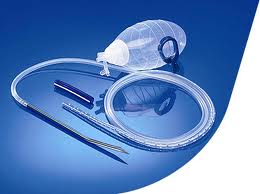Call Today ![]() 770.794.6643
770.794.6643
FAQs about Drains after Plastic Surgery

Depending on the type of plastic surgery you undergo, a surgical drain may required during the initial healing period. Here are some answers to a few commonly asked questions we receive here at Dr. Marcus Crawford’s office.
When are surgical drains removed?
It depends both on the procedure you underwent and how fast your body heals. There is no technical time limit to when the surgical drains removed. Usually, the drains are removed when the fluid coming out of the drain is very minimal. This is usually within the first seven days of surgery, but depends on the patient. Once the fluid coming out of the drain is minimal, Dr. Crawford’s staff will set a time to remove them.
What happens if the surgical drain comes out prematurely?
If your surgical drain naturally comes out before it is supposed to, simply contact Dr. Crawford. He will evaluate how you are doing and determine whether or not the drain needs to be put back in place.
Is dark red fluid normal after one week of surgery?
If you see dark red fluid one week after surgery, you usually need not worry, especially if your pain is minimal. Most likely the dark red fluid is blood that is naturally flushing itself out of the system. If you are overly concerned, or feeling pain, feel free to consult Dr. Crawford.
Why are drains used in breast augmentation surgery?
Drains are used after breast augmentation if Dr. Crawford feels that there may be extra fluid collecting around the implant after surgery. Drains allow the extra fluid, tissue, and blood to exit the body.
Will my drains be uncomfortable?
The surgical drains are used to remove old tissue and blood that result from the surgery. The drains are not uncomfortable.
How do I take care of the drain at home?
The best way to take care of your surgical drain at home is to make sure you are milking (emptying) the drainage tube several times per day. You want to make sure the fluid you are collecting has a way to exit, so follow the instructions of how to milk your collection bulb when it fills.
How do I shower with a surgical drain?
Showering with your drain is okay, and even recommended. Just make sure to use soap and water, and be extra careful not to pull out your drain. After your shower, rub some Neosporin at the drain exit site, and cover with a bandaid.
When should I be worried about my drain?
You should only be worried about your drain if you feel pain, or spreading redness around the drain exit site, if anything in the bulb looks like pus, if you are bleeding actively, if you experience an increase in temperature, if the drain quits draining, or the drain falls out. If you experience any of these symptoms, contact Dr. Crawford as soon as possible.
Surgical drains are most commonly used after tummy tuck and body lift surgery. Schedule a consultation with Dr. Crawford to discuss your desired procedure and find out if drains will likely be required during recovery.



Add new comment